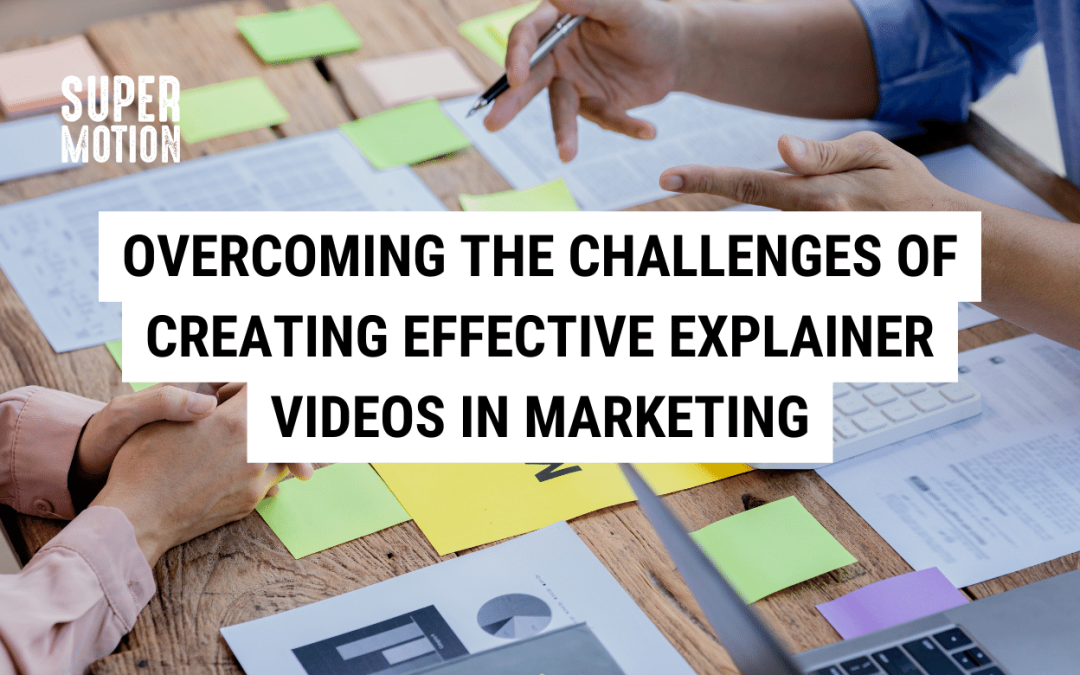
What Makes a Marketing Explainer Video Stand Out: Tips for Marketing Professionals
What Makes a Marketing Explainer Video Stand Out: Tips for Marketing Professionals
Video marketing is one of the most effective ways to convey a brand message to a target audience. There are various types of video marketing, but explainer videos have become increasingly popular as they can condense complex information into easy-to-understand visual content.
However, not all explainer videos are created equal, and the difference between a good and average video can make or break a marketing campaign.
In this blog post, we’ll explore what makes a marketing explainer video stand out and how you can create an engaging and effective video for your target audience.
Scriptwriting Techniques
One of the critical factors that differentiate a good marketing explainer video from an average one is the script.
To create an excellent explainer video, the script should involve storytelling structures that can emotionally engage the audience. A well-written script should have a clear message, a strong call to action and use persuasive language to retain the viewer’s attention throughout the video’s length.
Emphasis should also be given to the pace and tone of the script, ensuring that the audience follows the narrative flow effortlessly.
Using psychological engagement techniques such as visual storytelling, relatable characters, and interactive elements can boost the audience’s interest and make the video memorable and relatable.
Animation and Cinematography
The use of animation, mixed media, and cinematography in an explainer video can also set apart a good one from an average one.
While animation was once a niche in a particular industry, its unparalleled potential in digital marketing campaigns has made it an essential technique for marketers. An excellent explainer video should have a cohesive animation style that suits its tone, message and target audience.
The right mix of visual components such as typography, colour gradation, and motion graphics can make the video more engaging and help to convey the message effectively.

Storyboards and Goals
Creating an engaging explainer video starts with laying out a clear and goal-aligned storyboard. It helps to identify what message the video aims to communicate, the precise target audience, and how the narrative should unfold. A well-thought-out storyboard should ensure that the video hits all the necessary points and is on-brand with the company’s image and mission.
Interactive elements such as quizzes, polls, and clickable calls to action can help to elevate the viewer’s engagement and help to drive conversions even further.
The Use of Emotional Triggers
An excellent explainer video can utilise emotional triggers to create reverence and leave a lasting impression on the viewer’s mind.
Using advanced emotional triggers such as humour, anticipation, and shock can help to evoke an audience’s emotions. The careful implementation of emotional triggers can evoke empathy in the audience, ultimately making them loyal followers of the brand.

Targeted Content Creation
Another useful tip to enhance your video marketing campaigns is to create engaging explainer videos tailored to different target audiences.
By crafting content that resonates with specific market segments, you can significantly impact the outcome of your campaigns. This focused approach not only drives a better return on investment but also boosts conversions, resulting in increased engagement and brand loyalty.
So, take the time to understand your audience’s needs and preferences, and deliver compelling explainer videos that effectively communicate your message while capturing their attention.
Remember, the more targeted and personalised your content is, the greater the impact it will have on your overall marketing strategy.

Conclusion
To sum up: creating quality marketing explainer videos involves various elements. A well-crafted script, appropriate animation, and cinematography, a clear storyboard that targets specific goals, the use of advanced emotional triggers, and interactive elements can all contribute to making an explainer video outstanding.
With professional help, careful consideration of these elements can result in campaigns that exceed expectations, captivate audiences, drive leads, and boost revenue.
To start your video journey book here for a strategy call or get in touch on 01225 970242.

















Recent Comments